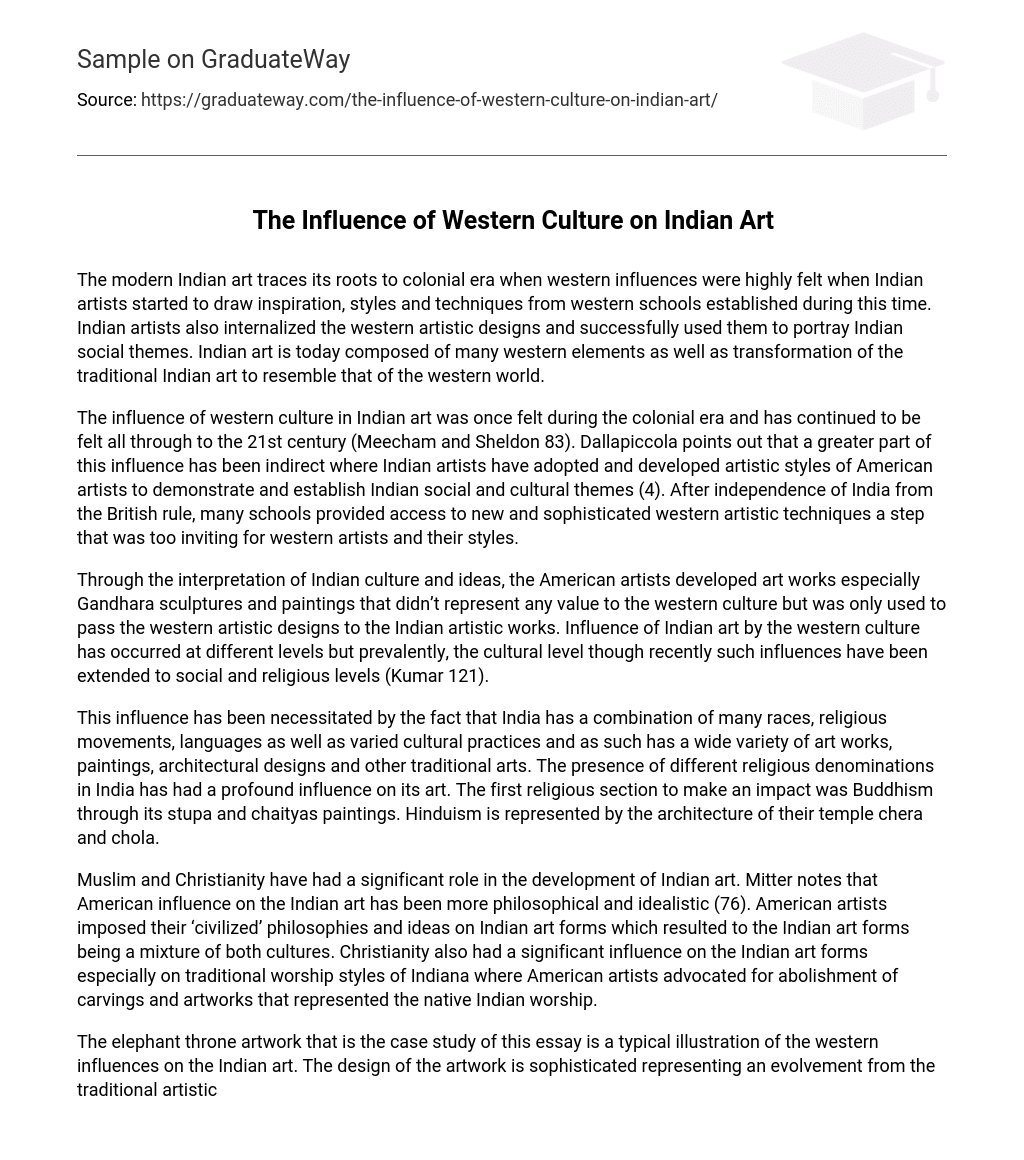The modern Indian art traces its roots to colonial era when western influences were highly felt when Indian artists started to draw inspiration, styles and techniques from western schools established during this time. Indian artists also internalized the western artistic designs and successfully used them to portray Indian social themes. Indian art is today composed of many western elements as well as transformation of the traditional Indian art to resemble that of the western world.
The influence of western culture in Indian art was once felt during the colonial era and has continued to be felt all through to the 21st century (Meecham and Sheldon 83). Dallapiccola points out that a greater part of this influence has been indirect where Indian artists have adopted and developed artistic styles of American artists to demonstrate and establish Indian social and cultural themes (4). After independence of India from the British rule, many schools provided access to new and sophisticated western artistic techniques a step that was too inviting for western artists and their styles.
Through the interpretation of Indian culture and ideas, the American artists developed art works especially Gandhara sculptures and paintings that didn’t represent any value to the western culture but was only used to pass the western artistic designs to the Indian artistic works. Influence of Indian art by the western culture has occurred at different levels but prevalently, the cultural level though recently such influences have been extended to social and religious levels (Kumar 121).
This influence has been necessitated by the fact that India has a combination of many races, religious movements, languages as well as varied cultural practices and as such has a wide variety of art works, paintings, architectural designs and other traditional arts. The presence of different religious denominations in India has had a profound influence on its art. The first religious section to make an impact was Buddhism through its stupa and chaityas paintings. Hinduism is represented by the architecture of their temple chera and chola.
Muslim and Christianity have had a significant role in the development of Indian art. Mitter notes that American influence on the Indian art has been more philosophical and idealistic (76). American artists imposed their ‘civilized’ philosophies and ideas on Indian art forms which resulted to the Indian art forms being a mixture of both cultures. Christianity also had a significant influence on the Indian art forms especially on traditional worship styles of Indiana where American artists advocated for abolishment of carvings and artworks that represented the native Indian worship.
The elephant throne artwork that is the case study of this essay is a typical illustration of the western influences on the Indian art. The design of the artwork is sophisticated representing an evolvement from the traditional artistic designs to modern techniques of producing artworks. The choice of design techniques and styles used in this artwork represents a merge of both traditional and modern artistic skills which is indication of the fusion of western artistic styles into Indian art. Though this piece of art represents a traditional Indian throne, it is presented in a modern and western artistic style.
Conclusively, the societal structure in India had a major influence in shaping the Indian art. With the increased social influence on the Indian social structure, the art works have received tremendous change tailored towards imitating the artworks of the western cultures (Mitter 76). The influence of Indian art was also dependent on the rulers and dynasties because the changes dependent on the tastes and preferences of the political rulers and leaders. Despite all the influences from western social, ideological and religious factors, the Indian traditional and tribal art has also had its part in influencing the shift to modern art.





